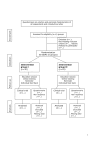A cluster randomised controlled trial in primary dental care based intervention to improve professional performance on routine oral examinations and the management of asymptomatic impacted third molars: study protocol
- PMID: 17448224
- PMCID: PMC1863426
- DOI: 10.1186/1748-5908-2-12
A cluster randomised controlled trial in primary dental care based intervention to improve professional performance on routine oral examinations and the management of asymptomatic impacted third molars: study protocol
Abstract
Background: Routine oral examination (ROE) refers to periodic monitoring of the general and oral health status of patients. In most developed Western countries a decreasing prevalence of oral diseases underpins the need for a more individualised approach in assigning individualised recall intervals for regular attendees instead of systematic fixed intervals. From a quality-of-care perspective, the effectiveness of the widespread prophylactic removal of mandibular impacted asymptomatic third molars (MIM) in adolescents and adults is also questionable. Data on the effectiveness of appropriate interventions to tackle such problems, and for promoting continuing professional development in oral health care are rare.
Methods/design: This study is a cluster randomised controlled trial with groups of GDPs as the unit of randomisation. The aim is to determine the effectiveness and efficiency of small group quality improvement on professional decision-making of general dental practitioners (GDPs) in daily practice. Six peer groups ('IQual-groups') shall be randomised either to the intervention arm I or arm II. Groups of GDPs allocated to either of these arms act as each other's control group. An IQual peer group consists of eight to ten GDPs who meet in monthly structured sessions scheduled for discussion on practice-related topics. GDPs in both trial arms receive recently developed evidence-based clinical practice guidelines (CPG) on ROE or MIM. The implementation strategy consists of one interactive IQual group meeting of two to three hours. In addition, both groups of GDPs receive feedback on personal and group characteristics, and are invited to make use of web-based patient risk vignettes for further individual training on risk assessment policy. Reminders (flow charts) will be sent by mail several weeks after the meeting. The main outcome measure for the ROE intervention arm is the use and appropriateness of individualised risk assessment in assigning recall intervals, and for the MIM-intervention group the use and appropriateness of individualised mandibular impacted third molar risk management. Both groups act as each other's control. Pre-intervention data will be collected in study months one through three. Post-intervention data collection will be performed after nine months.
Figures
References
-
- van den Berg H, Bruers JJM, van Rossum GMJM, Smits ER, Swinkels HWAM, Verweij GCG. Tandartsen, tandartsbezoek en tandheelkundige zorgverlening in Nederland. Voorburg/Nieuwegein: CBS/NMT. 1998.
-
- Mettes TG, Bruers JJ, van der Sanden WJ, Verdonschot EH, Mulder J, Grol RP, Plasschaert AJ. Routine oral examination: differences in characteristics of Dutch general dental practitioners related to type of recall interval. Community Dent Oral Epidemiol. 2005;33:219–26. doi: 10.1111/j.1600-0528.2005.00221.x. - DOI - PubMed
-
- Benn DK. Extending the dental examination interval: possible financial and organizational consequences. Evidence-based Dentistry. 2002;3:62–63. doi: 10.1038/sj.ebd.6400128. - DOI
-
- Helminen SK, Vehkalahti MM. Do check-up intervals correspond to caries indices in the free public dental service in Helsinki, Finland. Community Dent Health. 2002;19:166–172. - PubMed
-
- Karkkainen S, Seppa L, Hausen H. Dental check-up intervals and caries preventive measures received by adolescents in Finland. Community Dent Health. 2001;18:157–161. - PubMed
LinkOut - more resources
Full Text Sources
Medical



